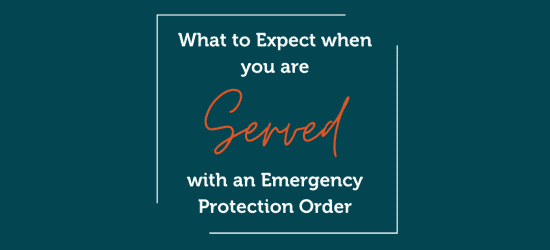
November 18th, 2019
A brief review of articles on the Internet about Emergency Protection Orders (EPOs) yields a plethora of help and instruction on how to obtain an EPO. They are targeted to family members that require the assistance of the Courts to calm and control their surroundings and to prevent interference by a violent or threatening person. Some of the titles are “Get an Emergency Protection Order” or “How do I apply for an Emergency Protection Order”. This brief blog post is not intended to be used by Claimants. Its intended audience is Respondents.
The Claimant is the person that has applied for and received an EPO. The Respondent is the person that is the subject of the EPO.
The EPO will have the following terms:
The EPO is used as a blunt instrument to restore control and safety in situations where evidence from the Claimant demonstrates that:
The initial application is completely one sided. Only the evidence of the Claimant is heard. There is no evidence or input from the Respondent. The EPO lasts for a year subject to a review by a Judge of he Court of Queen’s Bench. This review must take place within 9 business days (usually 2 weeks) from the date of the initial Order.
The only thing for a Respondent to do is to strictly comply with the Order. Attempts at direct or indirect communication or contact only makes things worse.
It is important for the Respondent to immediately obtain a transcript of Hearing (Emergency Protection Order) to determine what evidence the Court heard when granting the EPO. You can not Order the transcript online. To get a copy of a transcript for this type of hearing, you need to go in person to the Court location where the matter was heard and provide identification.
Once you have obtained and reviewed a copy of the transcript, you can prepare a response to for use at the review hearing. Any response made should be in the form of an Affidavit and provide evidence why the Order should be revoked. This Affidavit must be filed and served on the Claimant at least 24 hours prior to the review. Personal service should be completed by a Process Server.
If you do not file and serve an Affidavit in Response the Court will only have the evidence of the Claimant to make a decision.
At the review hearing, the Claimant will be represented by a lawyer (provided at no charge to her). If you are not prepared to proceed at that time, you can request an adjournment. A Judge may or may not grant the adjournment. If an adjournment is granted the EPO will be extended by the Judge until the next hearing date.
If the Claimant continues to indicate that she feels “threatened” or “endangered” the EPO will be continued. If there is contrary evidence, a judge will order that the matter be dealt with at a hearing (a trial). Because of Court scheduling, among other things, it may take months for a hearing to be completed.
This Blog is provided for information purposes only and is noted intended to be legal advice. As noted in all Emergency Protection Orders, you should immediately seek legal advice with respect to what your rights are and what you need to do respecting the Order.
Some of the things to do:
a.immediately write out your recollection of the facts;
b.Contact independent witnesses that are able to verify the facts. This may be individuals who observed the altercation. Obtain their witness statements in Affidavit form;
c.If you have been falsely accused with substance abuse, immediately obtain a clear drug screen to refute the allegation;
d.If violence has occurred, consider taking an anger management course;
e.Consider psychological counselling;
f.If substance abuse is an issue, consider substance abuse treatment;